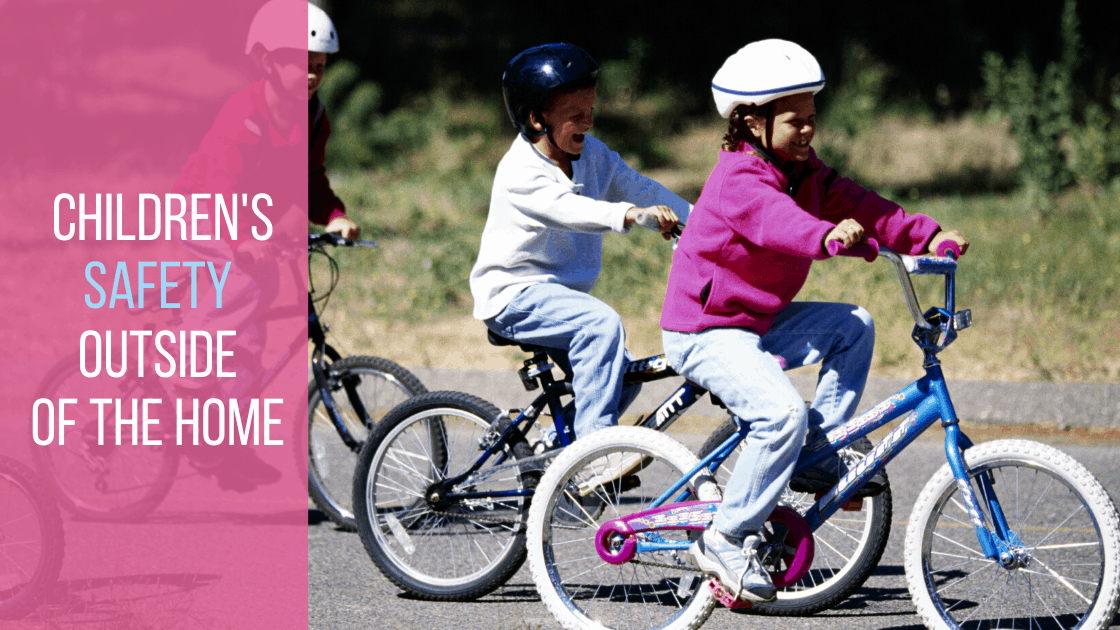
08 Jul Children’s Safety Outside of the Home
This blog post focuses on the children’s safety outside of the home. Last month we wrote about safety at home.
In Finland, parents tend to let their children play outside without supervision by the time they start school at 7 years old, often as early as from 4-5 years of age. However, when you are looking after someone else’s children, you must supervise them. If the parents are willing to allow their child to play outside without supervision, you will have to remember that you are still responsible for the child during your working hours.
Big cities can be especially dangerous from a safety point of view. Especially if you come from a small town or the countryside, you must familiarise yourself with all the safety issues in the big city.
Make sure to not leave the children unattended for any period, not even for 10 seconds. Take your phone with you and make sure you have enough battery power in case you need to call for help. Do not be distracted by your phone, though! Many accidents happen whilst parents or childcarers are distracted and don’t pay attention to what the children are doing.
Pack a small basic first aid kit with you including, for example, hand sanitiser, antiseptic wipes and plasters. We recommend you have a pack back instead of a handbag if you have to walk with children. This way you will have both hands free to hold the children’s hands. If you are looking after smaller children you can, of course, pack all the necessary items in their buggy.
In general, we would advise against venturing out with the children until you are sure that the children listen to you and will not, for example, try to run away from you whilst in public. When starting in a new job, it is important to establish trust first and to know how the children behave so that you can take them out safely.
It is a good idea to explain to the children where you are going and what the rules and expectations for them are before leaving the house. Teach them at home how to behave in situations you will encounter whilst being out and about.
Potential risks for children’s safety outside of the home
Cars and car parks
Make sure you drive safely. Ask the family if you are unsure how to use their car and take driving lessons if needed, especially if driving on the opposite side of the road than what you are used to in your home country. Seat belts need to be on all the time and the children need to have appropriate seats in the car. Study the relevant safety regulations regarding child seats so that you are aware of correct seat sizing, how the seat belts should fit, etc. for each child – do not assume that all parents know about these! Teach the older children not to leave the car after you park the car but to wait for you to get them out. Car parks are often very busy so make sure you either strap the children in a buggy or hold their hands to avoid accidents.
Public transport
Be extra careful in public transport. Always sit next to the children and, if possible, use seat belts. Hold the children’s hands when getting on and off the transport to avoid a situation where you are on the platform and the child in the moving vehicle and vice versa.
Roads and crossroads
When walking with the children, you must be in charge of how far they can go from you. If you are in a busy area, they should hold your hand or buggy. If you are in a less busy area, you can teach them to walk/bike ahead of you but to stop when you ask them to or when they come to a crossroad. Be extra careful when crossing roads.
Bikes and scooters
Make sure the children use helmets and other appropriate protective covering while cycling or using a scooter.
Playground
Make sure the children stay in one area in a large or busy playground so that you can see and correctly supervise all of them. Let the children play with age-appropriate equipment only.
Playdates
Playdates are a nice way to socialise with other people working in childcare but make sure you supervise the children properly whilst chatting with the other adult. If the playdates are for older children without their parents or carers, please make sure you get permission from the children’s parents for them to attend such playdates without you being present. You also do not have to agree to look after other people’s children if the parents set up playdates. Discuss the arrangement with your employers first. If you agree to host a playdate, make sure you know the visiting children’s medical information, possible allergies etc. and have contact details for their parents.
Water
Never let children go near water (pool, pond, river etc.) by themselves. Even if the children can swim you always need to supervise them near water.
Stranger danger
Remind the children to never to talk to strangers. Never leave children unattended even for a little while. Tell children about stranger danger and what to do if someone they don’t know approaches them.
Sun
Apply sunblock before leaving home and periodically when out in the sun. Put sun hats on children and keep babies out of the sun. Avoid the strongest sun around midday. Make sure the children drink plenty of water.
Bug bites
Apply insect repellent before going out if needed. Do not play in areas with a high risk of snakes, ticks, etc.
Risk assessment
We recommend you do a risk assessment for safety outside of the home as well as at home to make sure you are always one step ahead to minimise the risk of illness, injury or worse for the children in your care. Review the risk assessment periodically to remind yourself of the potential risks.
Our article is only a short list of potential risks. What else do you think should be included in the risk assessment? Feel free to leave a comment below!

No Comments